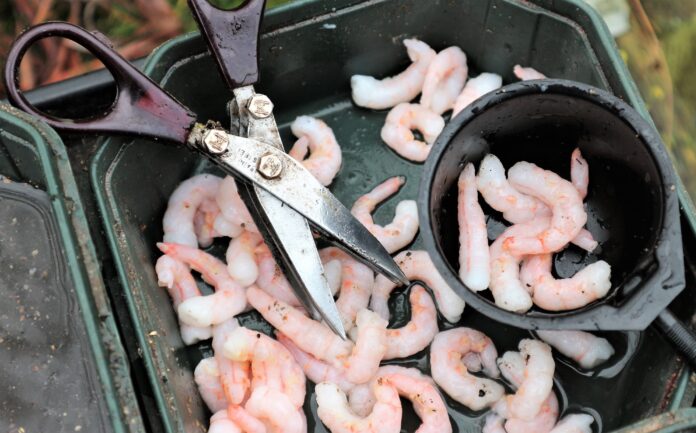STRANGE CONCOCTION
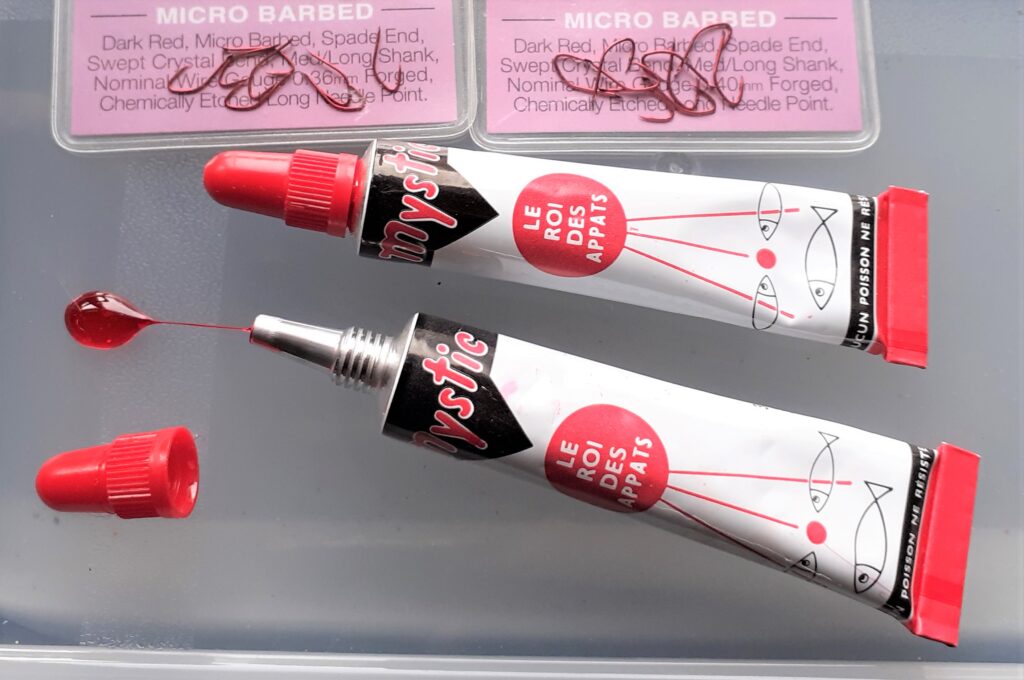

Rather than rigidly sticking with the same old baits, it can pay off to experiment. Mystic is a synthetic paste, smelling and looking a bit like glue. It’s available in red, yellow, white and black colours. I first used this strange stuff many years ago on a hard match after several biteless hours. I was bored, so I had been rummaging through my gear and noticed a tube of the red version, which a rep had given me as I ran a tackle shop at the time. I squeezed a dab on my hook, dropped my rig in, and my float shot under straight away. It did so several times and I ended up being the only angler on my section to trouble the scales. I used red Mystic a lot after that, finding it worked particularly well over loosefed hemp, weirdly catching species like skimmers, perch and gudgeon, which you never saw when using the deadly seeds on the hook. The red version looks like bloodworm, which could be the reason it works. This tubed bait is still widely used on the continent.
SNAKE CHARMING
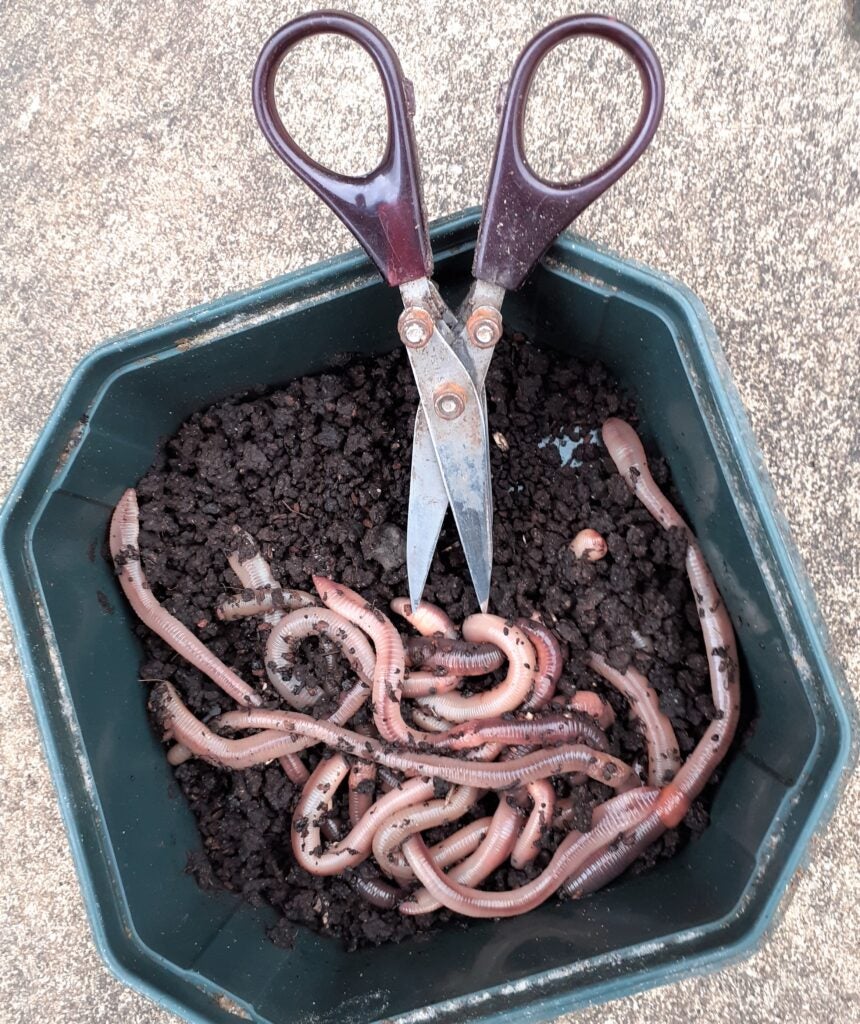

There used to be a clan of hardened canal anglers who cleaned up on big matches by always having big perch in their keepnets, boosting their catches well beyond the rest of the field. I finally drew next to one of these guys and got to see how it was done. He started like most of us, targeting small fish with squatts, pinkies and punched bread, rotating around several feed lines with various light pole rigs. But later in the competition a heavier rig was suddenly shipped out, looking more like the kind of tackle you’d use to bag big carp on the commercials. Half a lobworm on a size 10 hook looked like a snake going into the cut, dangling under a power top kit fitted with elastic that could stop a bus. The chap had obviously spotted something had changed in his swim, because he soon landed a whopping 3lb perch. He told me afterwards that all the small fish activity had pulled the predator in, signalled by a string of bubbles as it munched on one unlucky victim.
TERRIFIC TARES
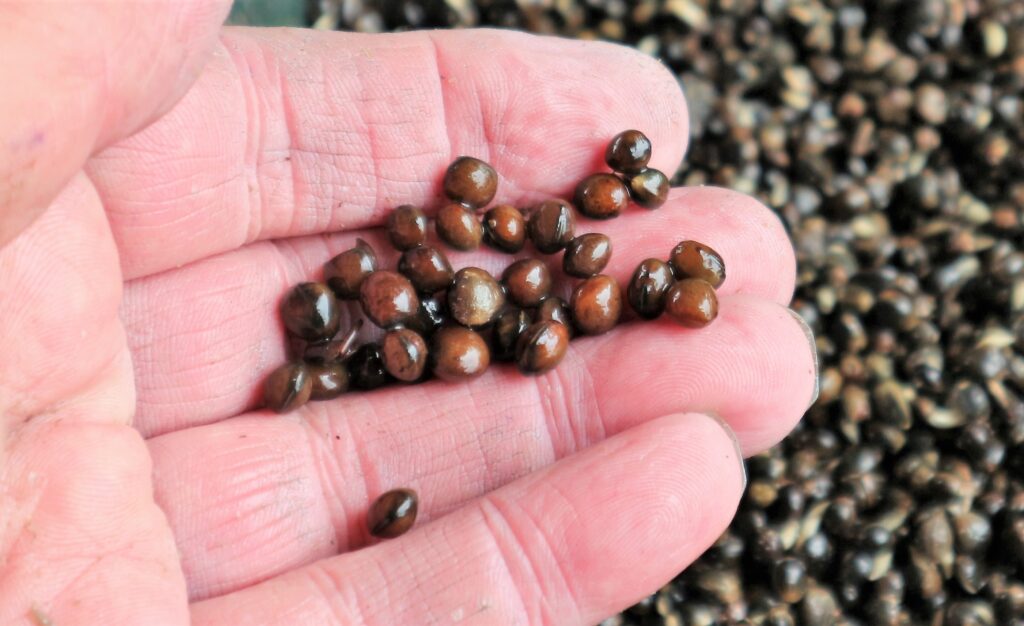

Hemp fishing can be a frustrating business, often taking a long time to gain a response and when it comes, fish like roach can drive you mad trying to connect with the lightning-fast bites. Striving to keep a grain of hemp on a small hook has been an angling puzzle many have failed to crack. Pushing the bend into the white split in the seed is a favourite way, but miss a bite and you have to re-bait. Drilling a hole in the hard shell is too long-winded for me, as is trying to spike a seed with various gizmos or lassoing it with fine line. The simple solution is to directly hook a cooked tare. It looks completely wrong, being much bigger than even the largest hemp seed. But the fish don’t care, which is the most important part. The hemp and tare combination works equally well on rivers and stillwaters, also at all depths, even with surprisingly shallow set floats. While you often have to fish very light tackle with hemp, tares will pull bites on stronger gear.
SEAFOOD OPTION
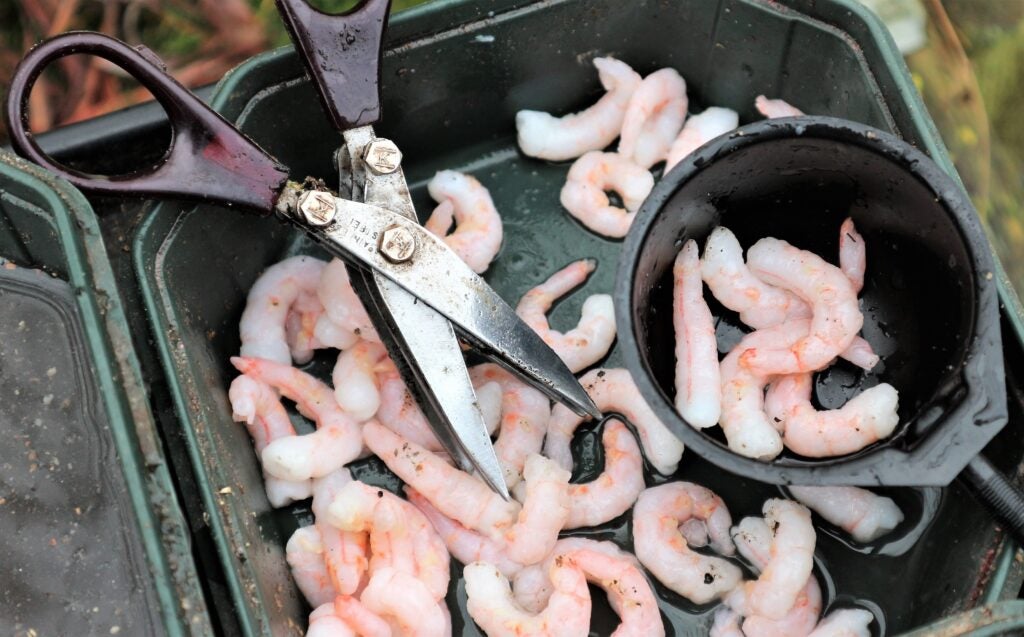

I always like to see what other anglers are up to. On a lake I fish regularly, I spotted a guy casting out a whole peeled prawn under a bodied waggler rig. The place was only about 3ft deep; the tackle made a big splash, and the float didn’t surface. To my amazement, his rod bent over and within 30 seconds a big skimmer was in his landing net. I had heard that prawns were an instant bait, but hadn’t reckoned on this type of speedy response! I brought some for my next trip to the venue and sure enough, quickly discovered if this bait was going to work, you knew within minutes. I caught some cracking perch on several different places after that. I favour cheaper, cut-price prawns, which are smaller and leaner. Even then, I only tend to use just the tail section on a size 12 or 14 hook, because big perch are surprisingly tackle-shy. Bream, carp, tench, chub and rudd are all suckers for this unusual offering, which combines well with chopped worm.
ROBIN RED
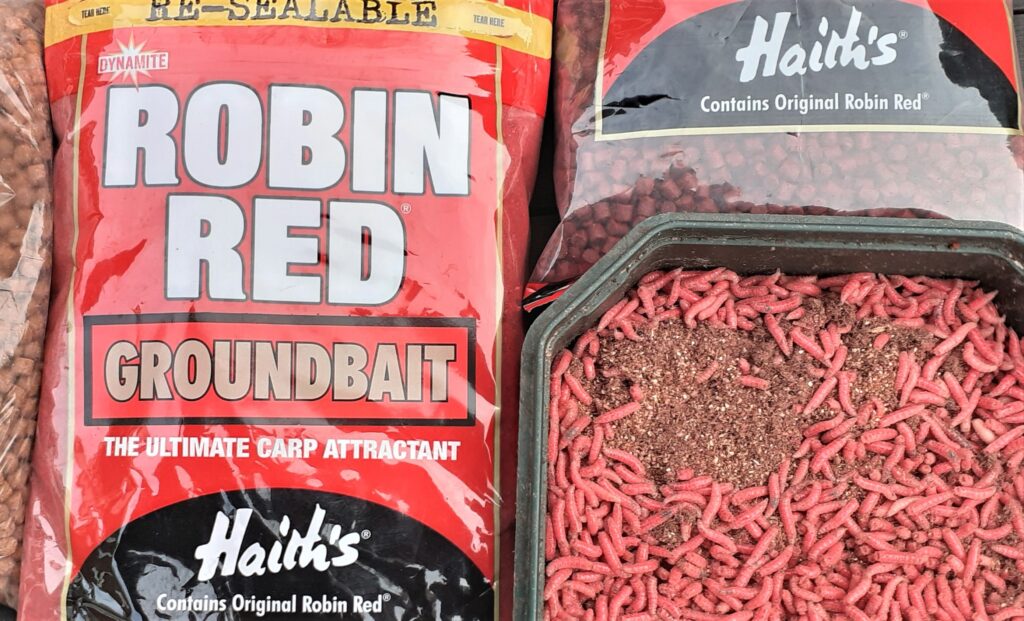

I’m glad I didn’t bother reading the packaging info when I first tried Robin Red groundbait and pellets. I was looking for a darkish feed, to avoid the teeming shoals of small silver fish on a local canal, aiming to get through to the bigger bream and tench I knew were lurking in there. Normal fare like maggots, casters and worms drove the small stuff into a feeding frenzy, blocking out anything sizeable. A simple plan of feeding Robin Red groundbait and 4mm pellets, along with a similar colour hook bait, seemed the way to go. It resulted in some glorious hauls of bream, tench, rudd and roach. This new approach worked brilliantly for skimmers and bream on many venues, switching between red maggots and pellets on the hook. I also caught loads of good-sized tench with my new bait discovery. When I finally bothered to find out what this strange, spicy concoction was all about, I discovered it was designed way back in the 1960s for carp!
RUBBER ROUTE
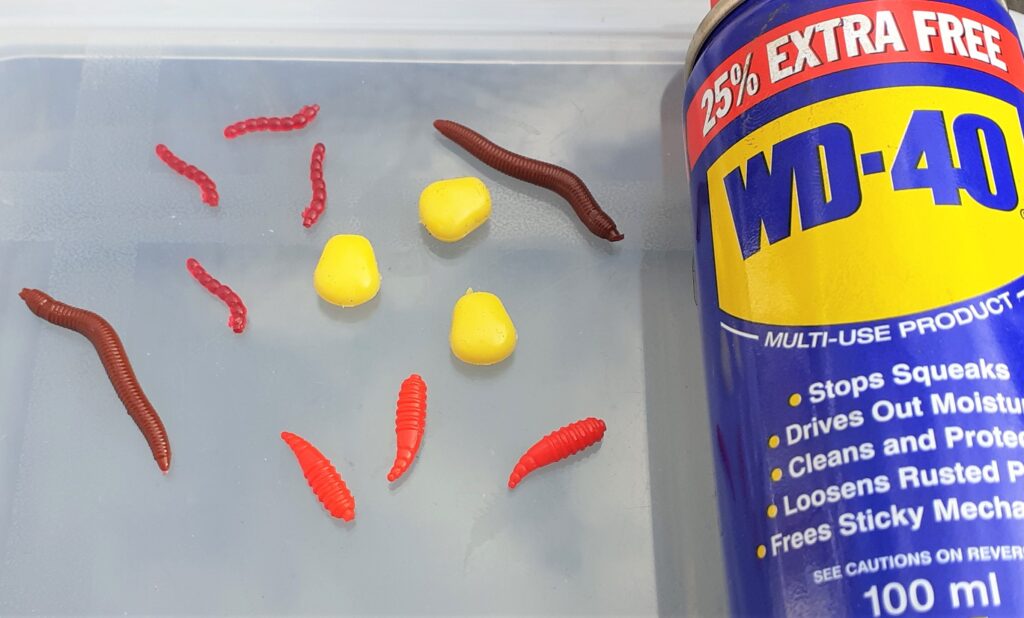

Who would have thought rubber baits would be so effective? Like most people, I suspected this was just another sales gimmick to begin with. But suddenly specimen anglers were landing some awesome fish using imitation rubber pellets, sweetcorn and boilies. There was some debate as to whether it was the lookalike effect, or a special oil used in the manufacturing process that was doing the business. Whatever the reason, synthetic maggots, casters, worms, hemp and even bloodworm followed. All you needed to do it seemed, was feed the real stuff and sit back with a more robust rubber offering on the hook. This defeated the small fish and often tempted the real whoppers… so everyone says. I might be missing out, but it has never appealed to me to give this imitation stuff a go. It just looks and smells all wrong compared to a lively maggot, a super-crisp caster, fresh bread from the bakery, or a strongly flavoured tub of proper pellets.
WAFTING ABOUT
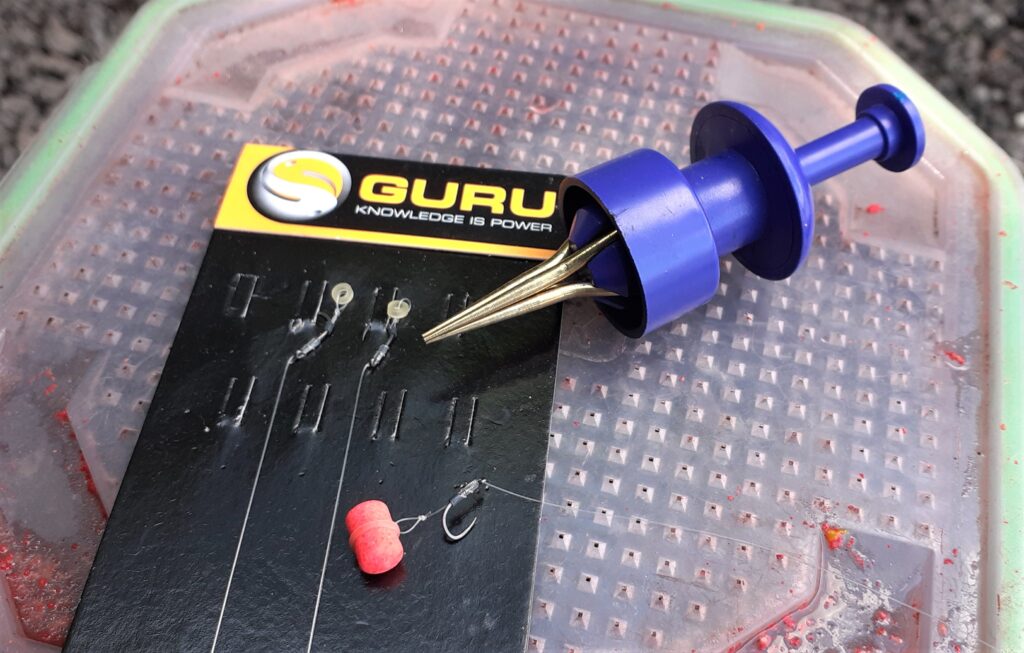

When I started fishing it was all about maggots, casters, worms, luncheon meat, bread and hemp. These were the main baits we all used on club outings. I never dreamt back then that one day I would be hair banding wafters, which are strange, fluorescent-coloured buoyant dumb-bells. These look and smell just like sweets, but are amazingly effective when used in combination with the new breed of method, hybrid and pellet feeders. It doesn’t matter if you are using pellets or groundbait to attract the fish, a completely different colour and flavour buoyant bait laying over the free grub will often do the business. Although buoyant, the weight of the hook sinks smaller wafters, but what makes them so attractive is if fish disturb them. Like their name suggests, they waft up enticingly. Certain colours work better than others every session, which can change completely next trip. I haven’t a clue why, so it’s best to always take a good mixture.
GOING ORANGE
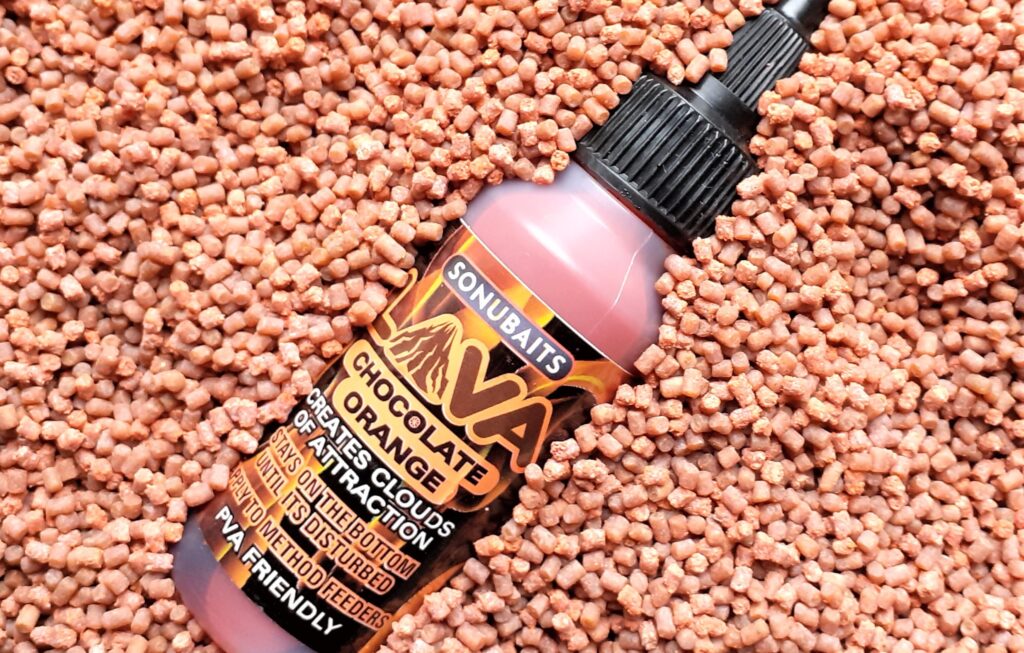

There I was watching my mate catching carp and bream while nobody else was doing any good. He was lobbing out a small feeder and when I asked what he was loading it with, he told me it was chocolate orange pellets. I thought he was having a laugh, but next outing he did the business again, this time with a pole. He emptied a shallow, frost-affected lake while everybody else struggled with normal baits, including me. I went to have a look and sure enough, he had a spare bag of chocolate orange 2mm pellets on his bait tray. He gave them to me. It was too late to try these out, but I returned a few days later, wondering how to use them. After dampening the bait, I discovered micros could be fired out a fair way with a powerful catapult, a bit like feeding a bed of hemp. I did this and fished double red maggots over the top with an insert waggler. It was almost embarrassing, catching fish all day long while others around struggled for bites.
BACK TO RED
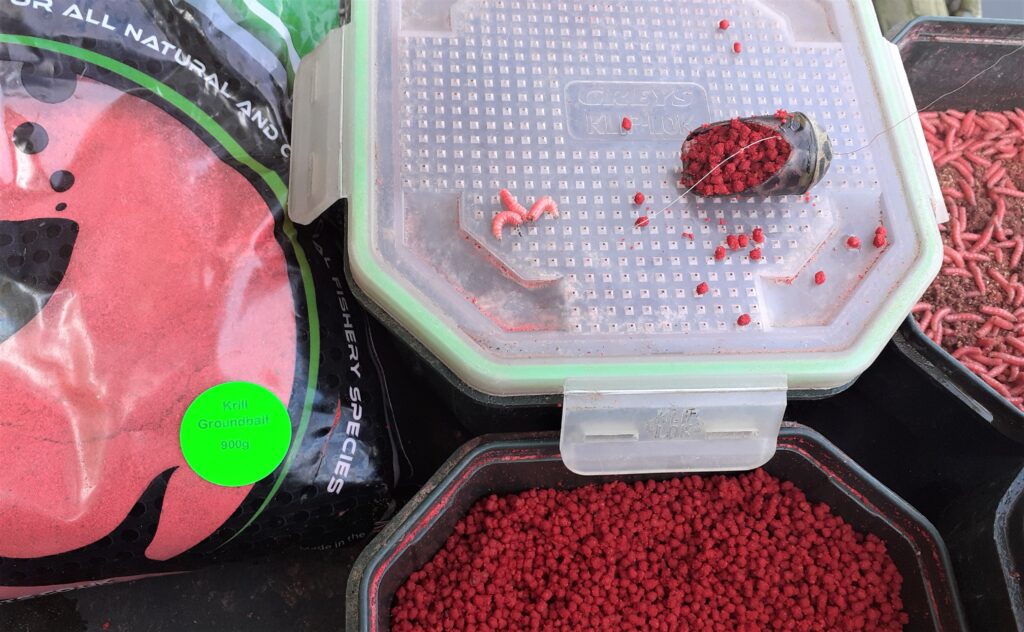

Another red bait I have learnt to like a lot is krill in its various forms, including feed pellets, soft hookers, groundbait and paste. It doesn’t smell brilliant, but fish seem to love this seafood flavour, combined with the red colouring. I use it for bream and tench during the summer months, also finding this additive attracts lots of perch, to the extent I often use krill micro pellets and groundbait when targeting this species. I’ve even caught perch on red krill hook pellets. Taking the groundbait approach with this flavour works well with small cage feeders, adding micros, casters and chopped worm. This tactic will catch most species, but can pull in nuisance small fish. If that’s the case, a switch to a pellet or method feeder, loaded with just krill micro pellets normally sorts things out. I also use krill micros a lot on commercials when groundbait isn’t allowed. They are great for cupping in loose on the pole, kick-starting swims almost instantly.
SCALING DOWN
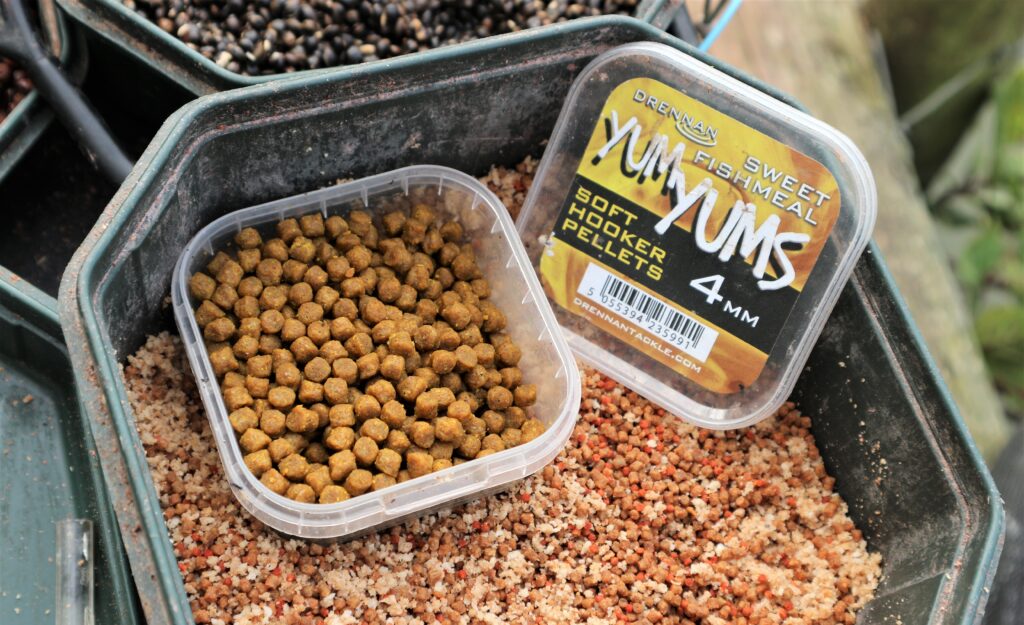

Something that mystifies me is how very few tackle shops, including the megastores, sell 4mm hook pellets. I have to search around really hard to find any, and can’t understand why they aren’t more popular. I bag up with this size all the time! Maybe it’s due to carp being the most sought-after species, where bigger 6mm pellets work fine. But I like targeting silver fish and find a smaller gauge is much better for these. The other problem is finding hooker pellets that actually do what they are supposed to. I like them to be firm enough to stay on the hook when casting running line rigs, not just for use with pole tackle. Drennan Yum Yums in Sweet Fishmeal, along with red Crab and Krill are excellent, as are Dynamite Durable Pellets in Krill and F1 Sweet flavours. Another good consistency hook pellet is the orange Bait-Tech Tuna Jelly Pellet. Although these are only available in 6mm, I air them for a couple of hours and they shrink to a smaller size.
SPECIAL EFFECTS
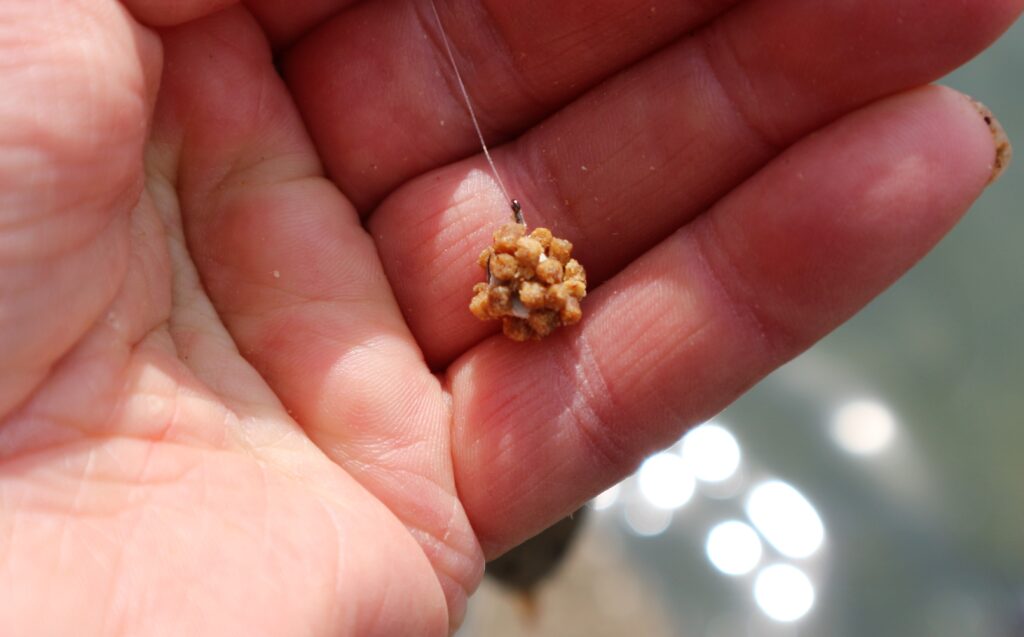

I accidentally dropped a sticky Dynamite Durable Hooker Pellet into a tub full of micros. To my amazement the micros stuck to the bigger bait like they had been glued on. I now call this ‘The Hedgehog’ and it works really well when fishing a bigger pellet over a bed of smaller ones. Another good way of attracting fish is to sprinkle dry groundbait on dampened feed pellets. If you give everything a good shake in a closed bait box, the groundbait sticks to the pellets, creating a fish-attracting shower of fine particles every time they are fed. Yet another top trick if your hook or expander pellets are too soft and keep coming adrift, is to leave a good handful exposed to the elements for an hour or so. They start to dry out and shrink, taking on a firmer consistency. This can be sped up even more by first rolling squidgy pellets in some dry groundbait. I often do this anyway to make hook pellets leak off particles and look more attractive.
MATCHING UP
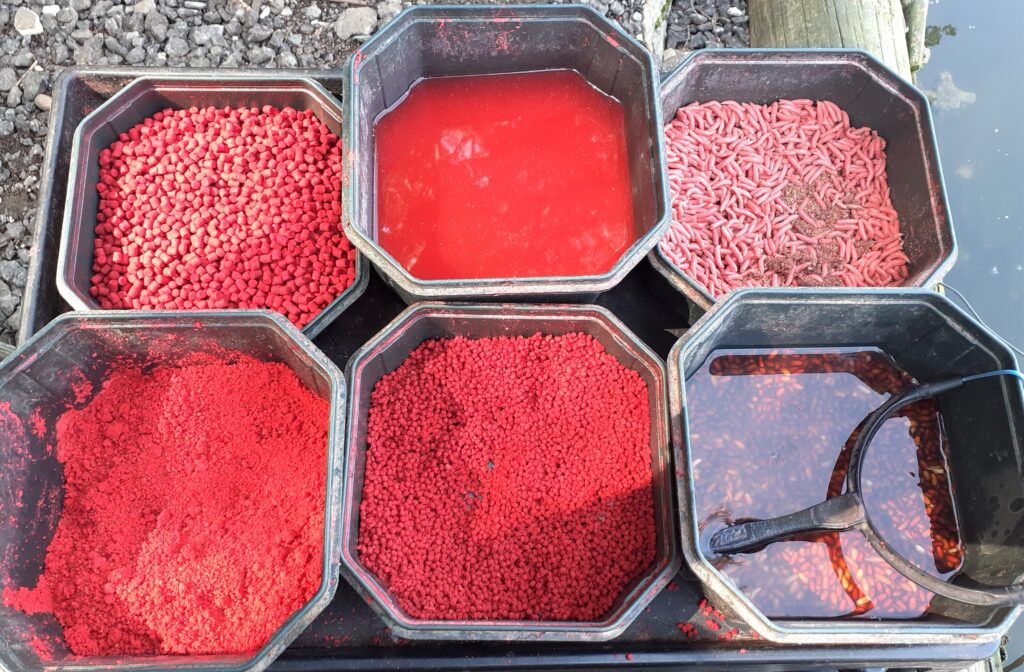

I prefer to keep the baits I’m using closely related. By that I mean if I’m using a certain type of flavoured and coloured pellets, having matching groundbait and paste makes good sense. If it’s all from the same stable, made from the same ingredients, they won’t clash. If fish are mopping up groundbait, a similar pellet or ball of paste will easily get sucked in, normally by streetwise feeders that avoid more obvious freebies. As you can see here, I like red as a base colour because baits like worms, casters and red maggots tie in perfectly with it. Red works well in warm or coloured water, while in the winter I tone things down to darker brown, or even black groundbaits. Brown or orange pellets are good colours to fish alongside dark crumb feeds. Being prepared to try something different from a normal bait menu often brings rich rewards.










